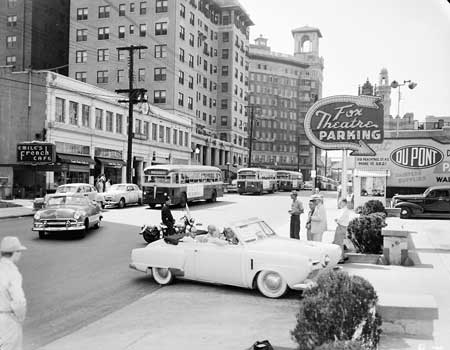Like many of America's cities, Atlanta's funding and original growth revolves around the construction of the railroads in the 19th century. In 1837, Atlanta was located at the end of a railroad line, thus giving the city its first name "Terminus." One of the executives of Western & Atlantic Railroad, Richard Peters, eventually named the city Atlanta. When commenting on Atlanta, he once said "the place can never be much of a trading city, yet may be important in a small way" (Ambrose 2003:1). A decade later, in 1847, Georgia recognized Atlanta as a city with a charter. Since then, Atlanta has come a long way.
In class we studied different factors that led to the growth and urbanization of American cities. I would now like to discuss how the three main factors, transportation, industrialization, and immigration relate to the growth of Atlanta.
Transportation
Initial growth in the early 1830's was mostly thanks to James Montgomery, an entrepreneur who established a store and a system of ferries down the Chattahoochee River (Ambrose 2003). While some of his ferries survived until the early 20th century, their importance was quickly overshadowed by the railroads.
The city of Atlanta grew out of the establishment of railroads! They became important to the "layout, naming, and political and economic makeup of the community" (Ambrose 2003:24). As a consequence, it was the railroad entrepreneurs, wealthy elites, businessmen, and land speculators that came to dominate early Atlanta. By the time of the Civil War, the importance of Atlanta's role in trade and transportation was apparent, and the city was clearly a strategic location to the South. General Sherman and his famous burning of the city and railroads destroyed much of the city's vitality, but also paved the way for new growth and industries. The post-Civil War period was a time of railroad construction boom, as well as the rise of the cotton industry (Ambrose 2003).
Near the end of the 19th century, Atlanta experienced vast expansion due to the addition of electric streetcars and horse drawn trolleys. I thought this was interesting because it fit the examples we talked about in class. Due to the streetcars, Atlanta was able to expand and "streetcar suburbs" emerged. In addition, the streetcar companies were funded by wealthy entrepreneurs who created companies. Two of the largest competing companies in the late 1800's were the Atlanta Railway and Power Company and the Atlanta Rapid Transit Company (Ambrose 2003).
Industrialization
Like the cities of the north, Atlanta's industrialization was marked by new technologies, better transportation, and wealthy entrepreneurs. However, Atlanta's industry revolved around the cotton textile mills. Large companies emerged and built mills, warehouses, and presses, which only benefited from the growth of the railroads. Other industries in the city included paper goods manufacturing, lumber, and fertilizer production. At the end of the 19th century, diversified commerce also became important. To diversify commerce and attract new industries, several different associations played a large role in industrialization and in persuading the city council to lower taxes. These notable groups were the Atlanta Agricultural and Industrial Association and the Atlanta Manufacturer's Association (Ambrose 2003).
Immigration
In contrast to the cities of the Frostbelt, Atlanta did not experience such a large population boom fueled by immigration. While there was a sizable German community, Atlanta's population increase was a result of people migrating from rural areas to the city (Ambrose 2003). When the need for labor emerged, organizations formed to attract different workers. One such organization was the German Immigration Society, founded in 1868, and the Negro Anti-Emigration Club, which tried to prevent black laborers from going north (Ambrose 2003).


No comments:
Post a Comment